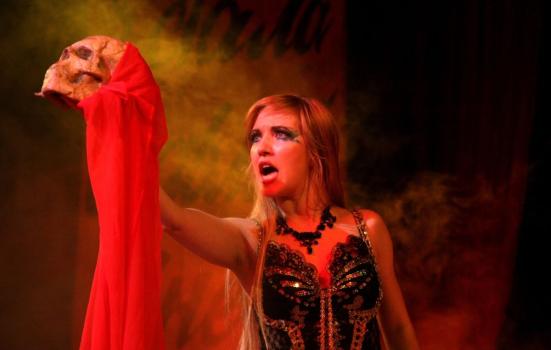Government figures reveal the economic value of music, performing and visual arts is outperforming the rest of the economy, but sector leaders warn individual venues continue to struggle.

Pxhere/Creative Commons
The combined value to the economy of visual and perfoming arts including theatre, opera and music has risen nearly 18 per cent on its pre-pandemic level, figures published by the Department for Culture, Media and Sport (DCMS) show.
Data in the DCMS Economic Estimates report show the category of music, performing and visual arts is 17.9% up on its pre-pandemic level, with its economic value growing from £921m in February 2020 – the last figure before the pandemic – to an estimated £1,086m in June 2023.
That is significantly sharper growth than the creative industries or cultural sector as a whole, which grew by 13.9% and 9.5% respectively over the same time period. The creative industries grew from £9.1bn to £10.3bn, and the cultural sector from £2.6bn to £2.9bn. Overall growth across the entire UK economy was 0.8%.
READ MORE:
- Government unveils Creative Industries Sector Vision
- Economic value of culture research gets £3m boost
Despite the impressive statistics, leaders in the sector have warned that many music venues and theatres are continuing to experience difficult times.
This rising economic contribution of performing arts, visual arts and music comes at a time when many such organisations are experiencing cuts in the public funding they receive.
Although overall funding from Arts Council England to National Portfolio Organisations increased by 9% to £446m a year for the 2023-26 investment period, the money is being shared among more organisations, meaning many previously-funded organisations are receiving less, with others having their funding pulled altogether.
And last week Arts Professional revealed that combined local authority funding for arts, theatres and museums is predicted to be 6.3% down on last year, a real terms drop of £60m.
Inflationary pressure
David Leigh-Pemberton, Head of Policy and Public Affairs at the Society of London Theatres/UK Theatre, said that while theatres reported strong sales last year, inflationary pressure is a still significant issue.
“The latest box office report, specifically examining 2022 data from the theatre industry, shows that audience attendance figures are strong (up 7.2%) and average ticket prices are remaining steady (increased by just £2.21)," he said.
“But, when coupled with rising production costs, the overall recovery to the sector is slower than the DCMS figures might indicate (revenue fell 1.1% when adjusted for inflation).”
He added: “Although DCMS may use these figures to inform policy, they also use engagement with the sectors and businesses. [We] engage regularly with DCMS on issues important to the sector, including promoting the benefit to society and the wider economy of a strong funding platform for theatre and the arts.”
Incredibly difficult circumstances
CEO of Music Venue Trust, Mark Davyd, told Arts Professional that the way in which the figures are grouped together in broad categories means they “miss the nuances about how each part of the sector is performing”.
He said while high-value music events to large audiences are "having their best year ever by a very wide margin”, with ticket prices for individual headline stadium shows rising by more than 30%, the story for grassroots music venues and the UK’s “talent pipeline” is very different.
“At the grassroots music venue level, we are facing incredibly difficult circumstances which have resulted in more than one venue per week closing - 66 venues closing in the last 12 months," he said.
“We have more than 80 venues currently using Emergency Response Service [for advice], with the expectation that somewhere in the region of 50% of these will be forced to close.
“We are able to predict with some confidence that over 100 venues will close this year as the least worst case scenario, with potentially more than 200 going out of business for live music.”
The sector, he continued, was operating at a 0.2% profit margin in 2022. But due to “a perfect storm" of the energy crisis, staffing costs, competition for audience attention, inability of artists to meet touring costs resulting in fewer grassroots tours and the cost-of-living crisis, this has "fallen into negative territory”.
Market failure
Davyd added: “The DCMS report tells you that an entire sector is prosperous, but does not detail the very significant market failure and collapse of the talent pipeline within it.
“These are issues DCMS are fully informed on and taking action to tackle, but plainly an industry that is making incredible returns at the top while the bottom collapses has some responsibility to act to prevent the loss of future talent.”
“Basically, you fix the roof while the sun is shining, and the live music industry is failing to do that and relying on the government to bail out its grassroots sector.”
Jamie Njoku-Goodwin, Chief Executive of UK Music, shares Davyd's concerns.
He said: “While it’s welcome that the contribution of the creative arts to our economy has grown, significant challenges remain for the UK music industry amid intense global competition.
“It’s fantastic to see festivals and major artists pulling in huge audiences, but rising production and supply costs have put dozens of our small and grassroots venues, festivals, and studios under real threat.
“There is an existential threat to our talent pipeline and the important job of nurturing the music creators and music professionals of the future. We need more support for music education.”
Work is currently being conducted by the Arts and Humanities Research Council (AHRC) to develop a more holistic approach for capturing and articulating the value of culture and heritage to inform future policymaking decisions.




